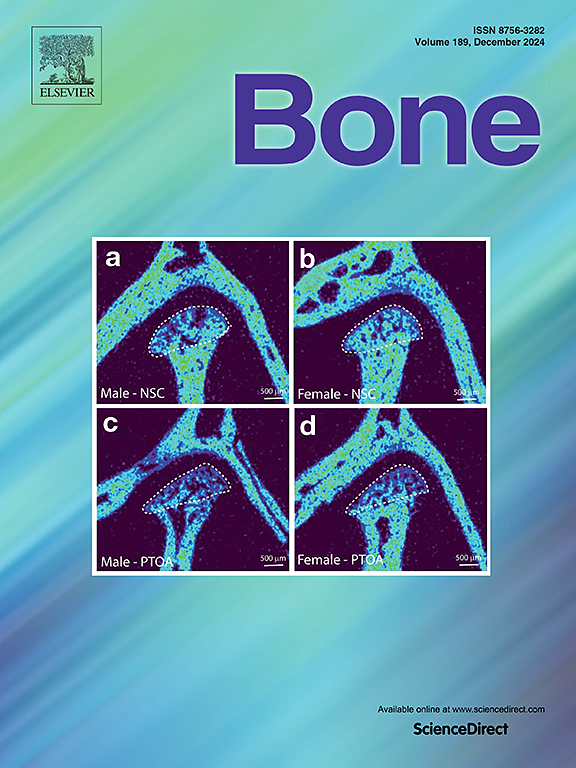Intracellular Staphylococcus aureus in osteoblasts and osteocytes and its impact on bone homeostasis during osteomyelitis
IF 3.6
2区 医学
Q2 ENDOCRINOLOGY & METABOLISM
引用次数: 0
Abstract
Osteomyelitis is a severe infection of bone tissue that can lead to bone loss and even osteonecrosis. This condition is mostly caused by Gram-positive bacteria, with Staphylococcus aureus being the most common etiological agent. Among the pathophysiological mechanisms involved in osteomyelitis, the ability of S. aureus to be internalized by osteoblasts or osteocytes and to survive within these cells, is particularly noteworthy. Infected osteoblasts and osteocytes not only serve as reservoirs in chronic cases of osteomyelitis but also play an active role in the osteoimmunology process, notably by producing mediators that promote the bone resorption activity of osteoclasts, thereby disrupting bone homeostasis. The present review explores both historical and recent literature on the internalization of S. aureus by osteoblasts and osteocytes, its intracellular behavior following internalization, and its mechanisms for inducing cell death. Additionally, it examines how S. aureus affects bone formation activity and promotes the production of inflammatory and pro-osteoclastic mediators. This review aims to highlight the limitations of current findings and outline key questions for future investigations.
成骨细胞和骨细胞内的金黄色葡萄球菌及其对骨髓炎期间骨稳态的影响
骨髓炎是一种严重的骨组织感染,可导致骨质流失甚至骨坏死。这种情况主要是由革兰氏阳性细菌引起的,其中金黄色葡萄球菌是最常见的病原体。在骨髓炎的病理生理机制中,金黄色葡萄球菌被成骨细胞或骨细胞内化并在这些细胞内存活的能力尤其值得注意。受感染的成骨细胞和骨细胞不仅在慢性骨髓炎病例中充当储存库,而且还在骨免疫过程中发挥积极作用,特别是通过产生促进破骨细胞骨吸收活性的介质,从而破坏骨稳态。本文综述了关于金黄色葡萄球菌被成骨细胞和骨细胞内化的历史和最新文献,内化后的细胞内行为及其诱导细胞死亡的机制。此外,它还研究了金黄色葡萄球菌如何影响骨形成活动并促进炎症和促破骨介质的产生。本综述旨在强调当前研究结果的局限性,并概述未来研究的关键问题。
本文章由计算机程序翻译,如有差异,请以英文原文为准。
求助全文
约1分钟内获得全文
求助全文
来源期刊

Bone
医学-内分泌学与代谢
CiteScore
8.90
自引率
4.90%
发文量
264
审稿时长
30 days
期刊介绍:
BONE is an interdisciplinary forum for the rapid publication of original articles and reviews on basic, translational, and clinical aspects of bone and mineral metabolism. The Journal also encourages submissions related to interactions of bone with other organ systems, including cartilage, endocrine, muscle, fat, neural, vascular, gastrointestinal, hematopoietic, and immune systems. Particular attention is placed on the application of experimental studies to clinical practice.
 求助内容:
求助内容: 应助结果提醒方式:
应助结果提醒方式:


